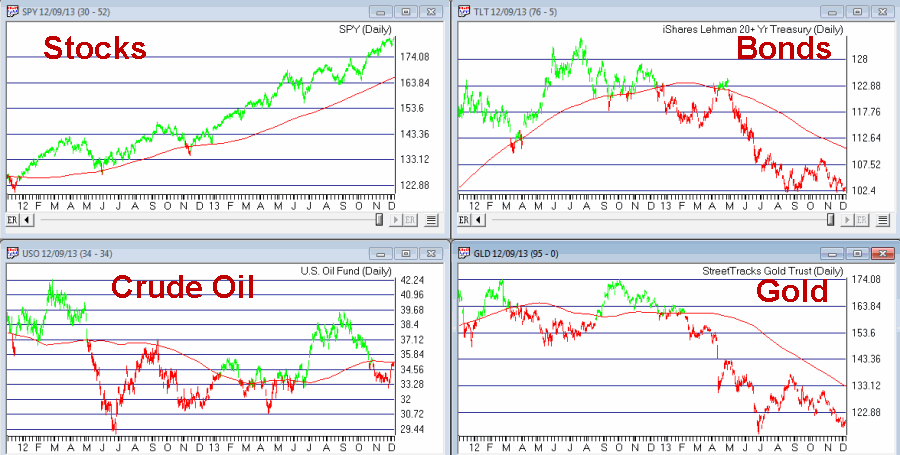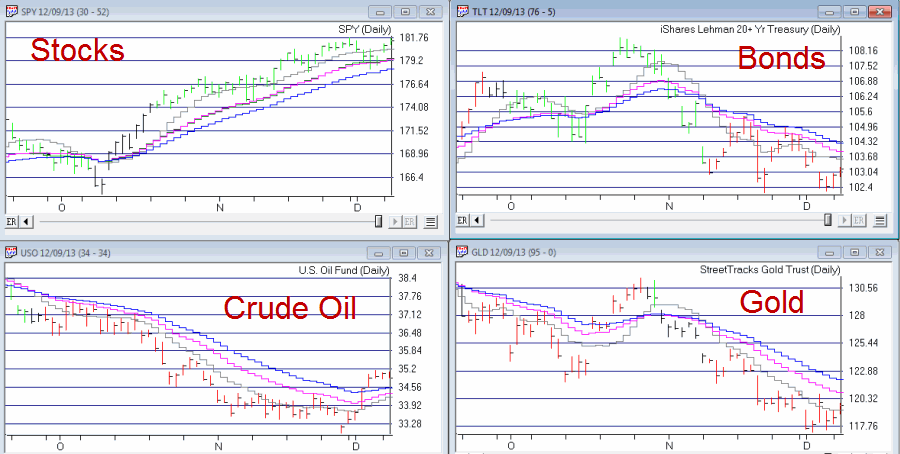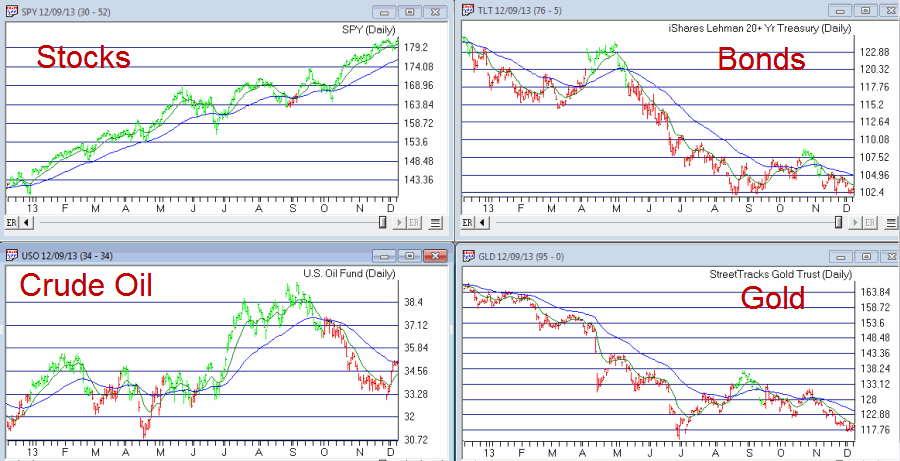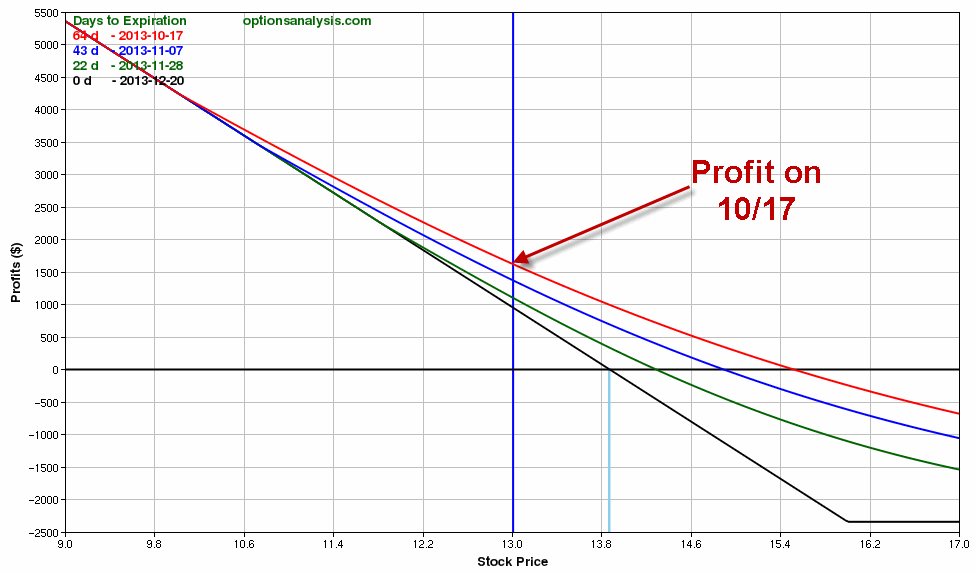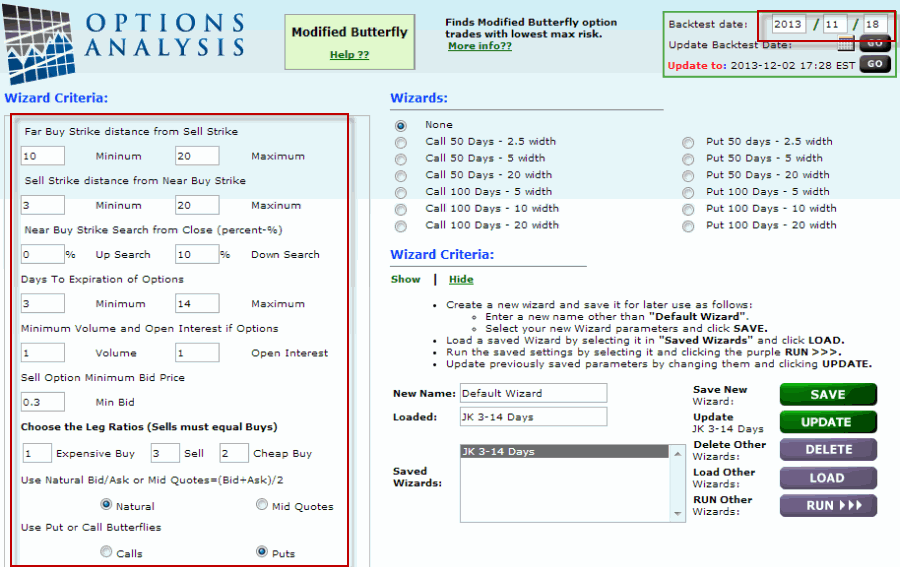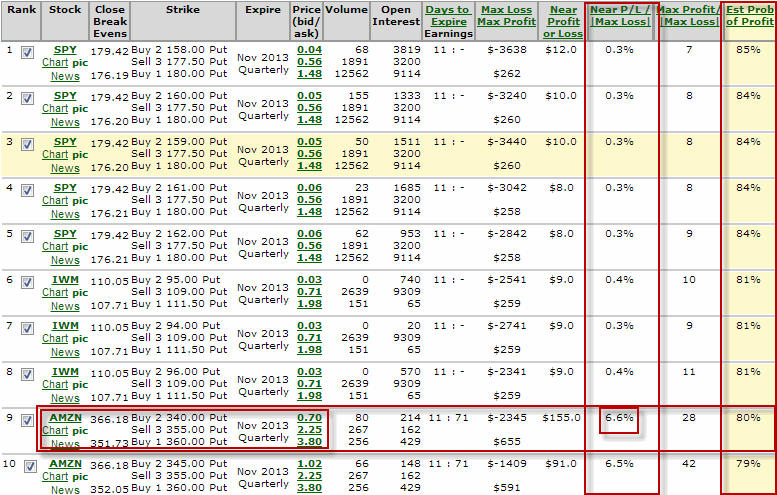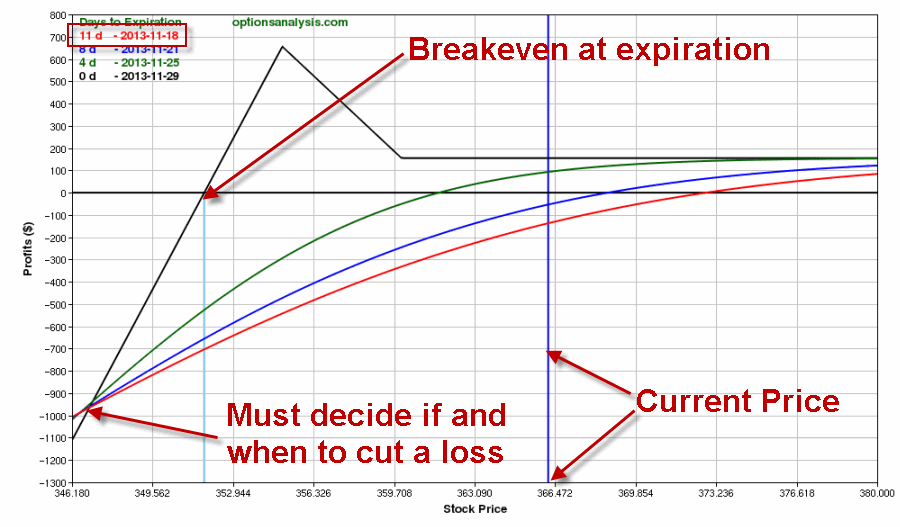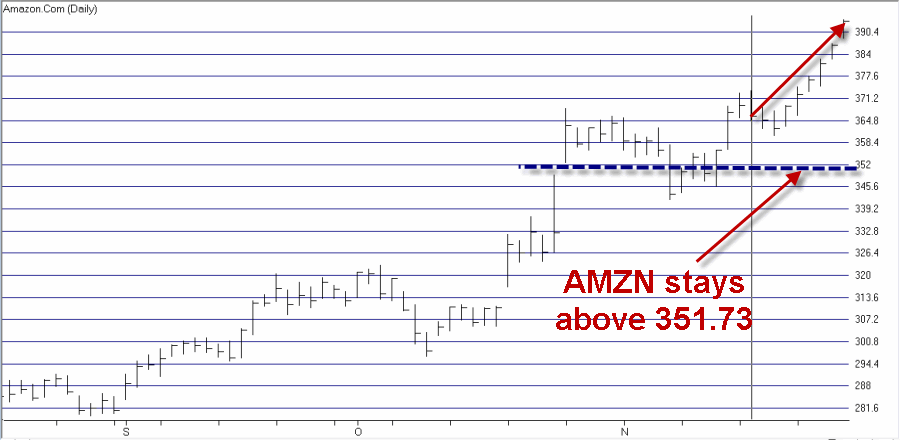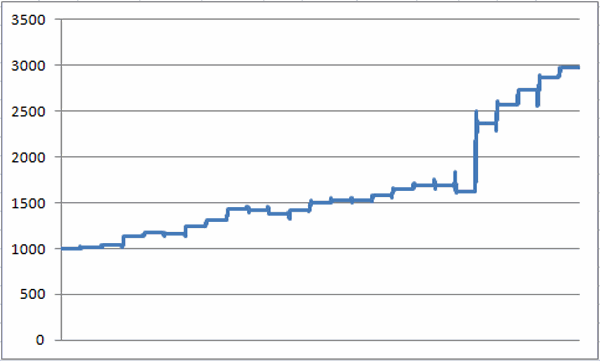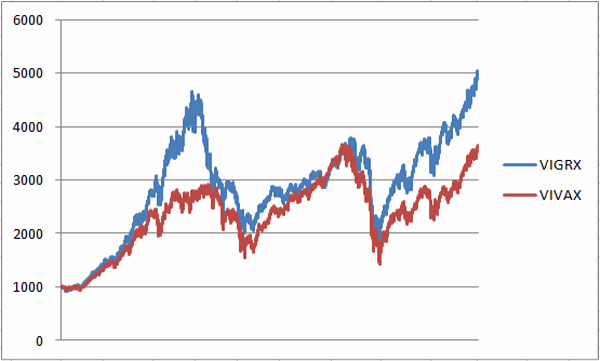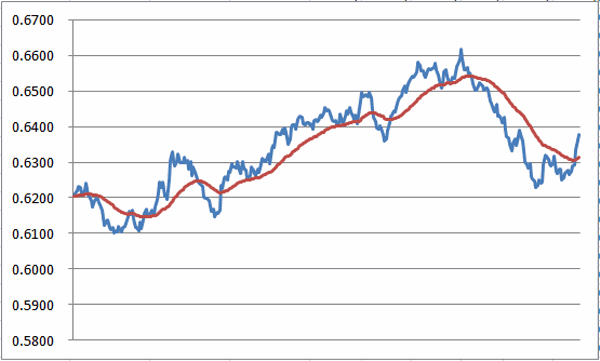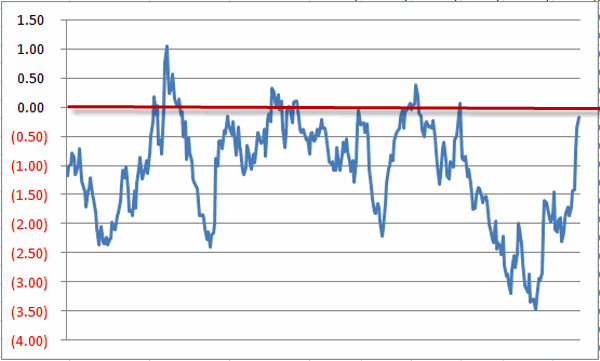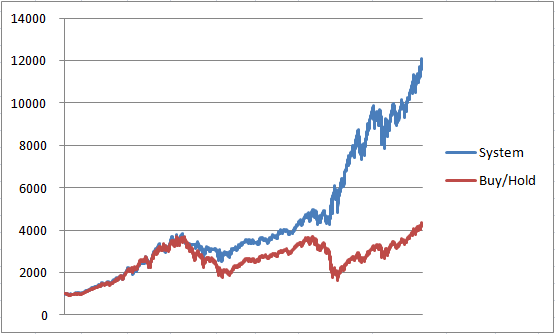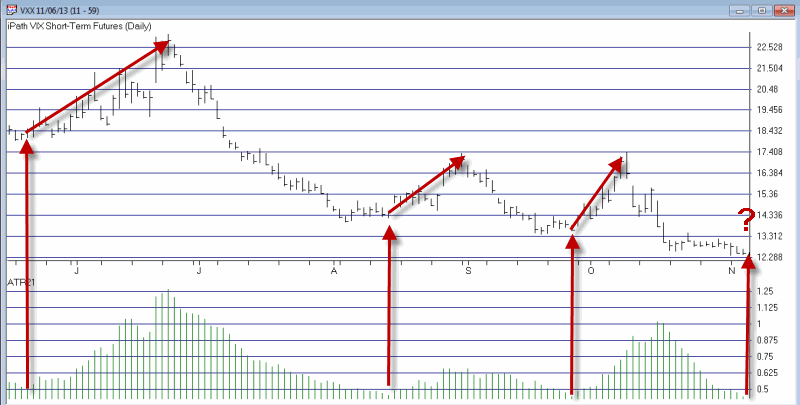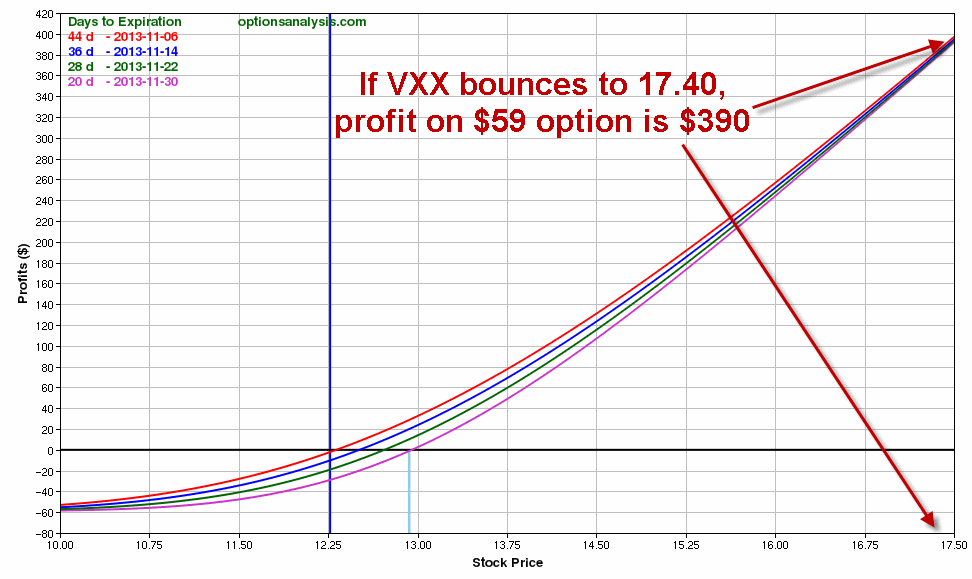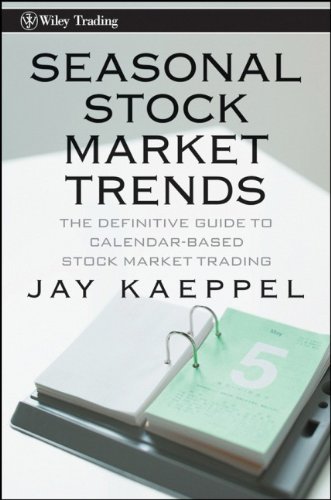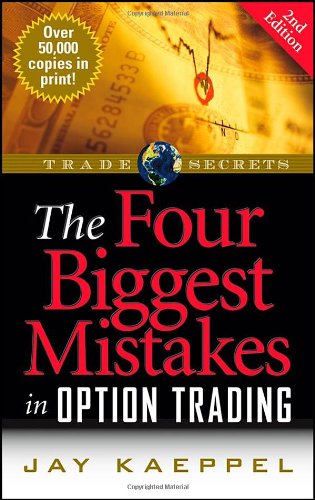A long time ago I evolved into something of a “go with the flow” kind of guy – at least when it comes to the financial markets. Sure, in my youth I spent a fair amount of time staring into my crystal ball and trying to “pick tops and bottoms with uncanny accuracy.” Unfortunately, it took me a long time to figure out that my crystal ball was not actually functioning.
So I have long understood the benefit of simply using some objective method to define the trend is either “up” or “down”, and just kind of seeing where it leads. This approach came in pretty handy in 2013 when the “news” was essentially uniformly bad from start to finish. But did the stock market care – oh contraire!
Updating the old adage “Don’t Fight the Fed” into today’s jargon:
“If the Fed is pumpin’, the stock market’s jumpin’. ”
And at the moment, there appears to be no end in sight (at least regarding QE2IB, or “Quantitative Easing to Infinity and Beyond”).
So why do I all of a sudden have a foolish hankering to buy gold stocks? This makes no sense at all. In Figure 1 you see four different gold stock related investment vehicles. Can you say “well established downtrend?” Sure, I knew you could. Some have broken down to new lows others are still holding out hope of establishing a double bottom. And for some inexplicable reason, I feel this urge to play the long side. 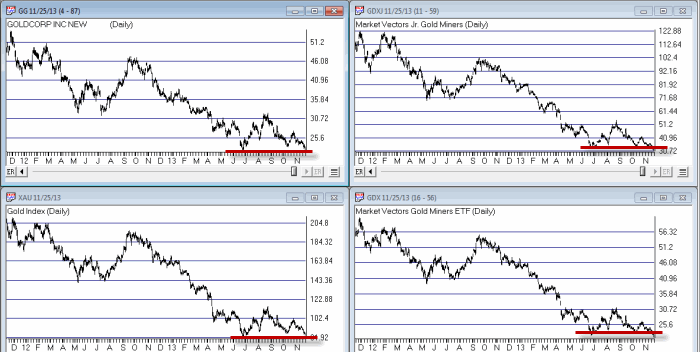 Figure 1 – Gold Stock Double Bottom; In the Making or Wishful Thinking? (Courtesy AIQ TradingExpert)
Figure 1 – Gold Stock Double Bottom; In the Making or Wishful Thinking? (Courtesy AIQ TradingExpert)
The key hesitation here is the simple fact that on the approximately last 57 times it “looked” like a potential bottom in gold stocks…….it wasn’t. Will this time around be any different? Probably not. Still……….in the immortal words of Glenn Frey, “the lure of easy money, it’s got a very strong appeal.”
To Give In Or To Fight the Urge?
Investing and trading is a game best played by establishing certain rules (for example, “go with the trend”, “cut your losses”, etc.) and then sticking to them. But human nature is, well let’s be blunt here, a pain in the butt. The urge to “pick a bottom” is one of the stronger, more compelling urges that any trader feels. What a coup if you pull it off (which of course you probably won’t)!
So here is the question? If you feel the urge to “pick a bottom”, should you:
a) Fight the urge in every case?
b) Give into the urge and bet the ranch?
c) Give into the urge and risk a small, acceptable amount of capital?
If you picked answer, b) my frank advice is to let someone else handle your money.
If you picked answer a), more power to you and I greatly respect your discipline.
If you picked answer c) yo, what up dog!? (Sorry, I inadvertently walked in on some video my kids were watching)
I personally can live with answer c). For a couple of reasons. First of let’s establish the fact that choosing answer c will probably lead to your losing money more often than not. Sorry, that’s just the reality. However, it can also serve as something of a “release valve”, whereby the occasional small mistake reminds us not to make a big huge mistake (i.e., answer b, somewhere down the line)
So let take a look at one possibility.
Finding a Trade (for better or worse)
I used www.OptionsAnalysis.com to look for long call trades on tickers GDX, GDXJ, XAU, NEM and GG. Sorting for Bullish percent to double and then among the top trades chose the one with the highest Gamma (long story short, high gamma in my book equals more “bang for the buck”)
The trade I came up with was buying the GDX January14 22 call at $1.06 as shown in Figures 2 and 3.
So is this a good idea? In all candor, probably not. But let me just explain what I am looking at.
Let’s say I am a trader with a $25,000 trading account and are willing to risk (throw away?) 2% of our trading capital on a foolhardy attempt to pick a bottom (hey, it’s my account, I can do what I want).
This means I can risk $500 ($25K x .02). So if the option trades at $1.06, this means I can buy up to 4 contracts and risk $424.  Figure 2 – GDX Call Trade (Courtesy: www.Optionsanalysis.com)
Figure 2 – GDX Call Trade (Courtesy: www.Optionsanalysis.com)
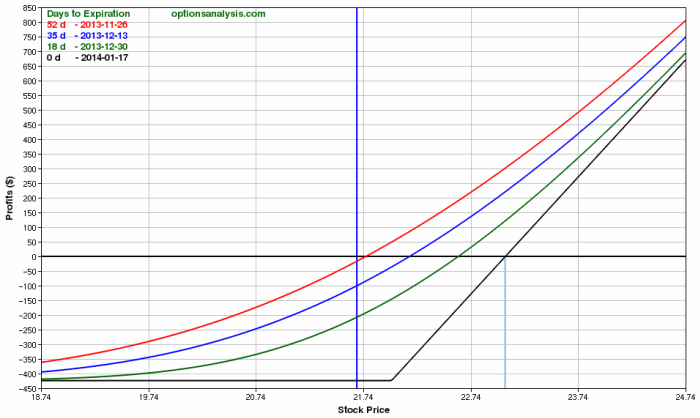 Figure 3 – GDX Call Trade Risk Curves (Courtesy: www.Optionsanalysis.com)
Figure 3 – GDX Call Trade Risk Curves (Courtesy: www.Optionsanalysis.com)
So what are the likely (or at least possible) outcomes?
#1) Murphy’s Law being what it is, if I take this trade gold stocks will almost certainly continue to sink. In this case the worst case scenario is that I hold the calls until January expiration and lose $424.
#2) if somehow, the market gods smile, let’s assume that GDX bounces back up to its early November high near $24.70. In this case, the trade will generate a profit of $660 to $880 or more, depending on how soon GDX bounces.
Summary
As a rule I would never advocate for someone else to “pick a bottom”. But let’s face, every once in awhile, the urge strikes. So if you decide to give into the urge, make sure:
a) You don’t risk very much money.
b) You have enough upside potential to at least make it worth your while to do something that you may well look back upon and say, “Why the heck did I do that?”
As long as you employ a) and b) above, I view it as sort of a win-win situation (depending of course on how you define “win”).
If the underlying security in question does bounce to higher ground, you have the opportunity to generate a nice profit.
On the other hand, if the underlying security continues its current trend, you are served a powerful reminder of why you don’t try very often to “pick tops and bottoms with uncanny accuracy.”
So the bottom line is this: I am NOT telling you that I think gold stocks are about to bounce and that you should buy gold stocks (or options on gold stocks). What I am telling you is that sometimes the urge to speculate will rise to the surface.
When that urge strikes there is a right way and a wrong way to react.
Happy Thanksgiving
Jay Kaeppel
